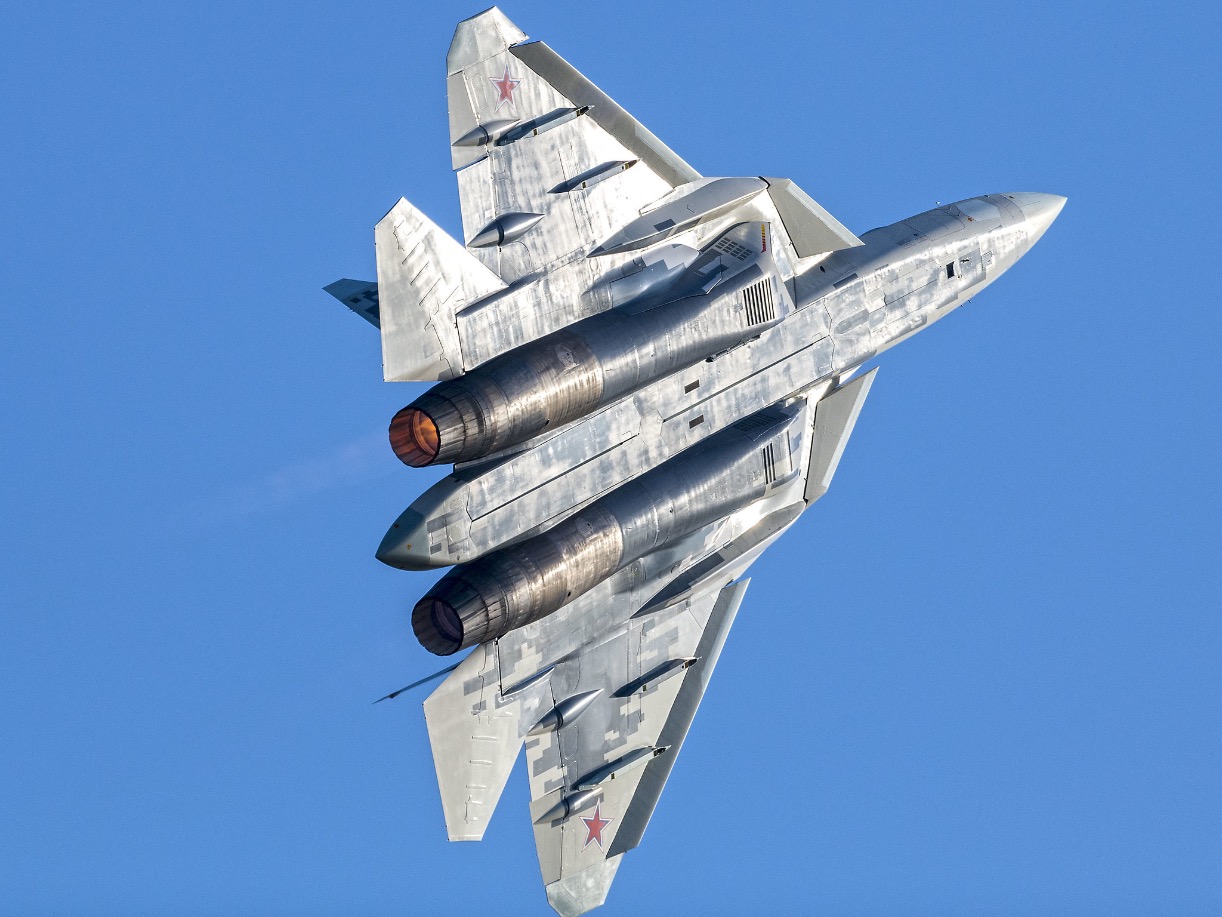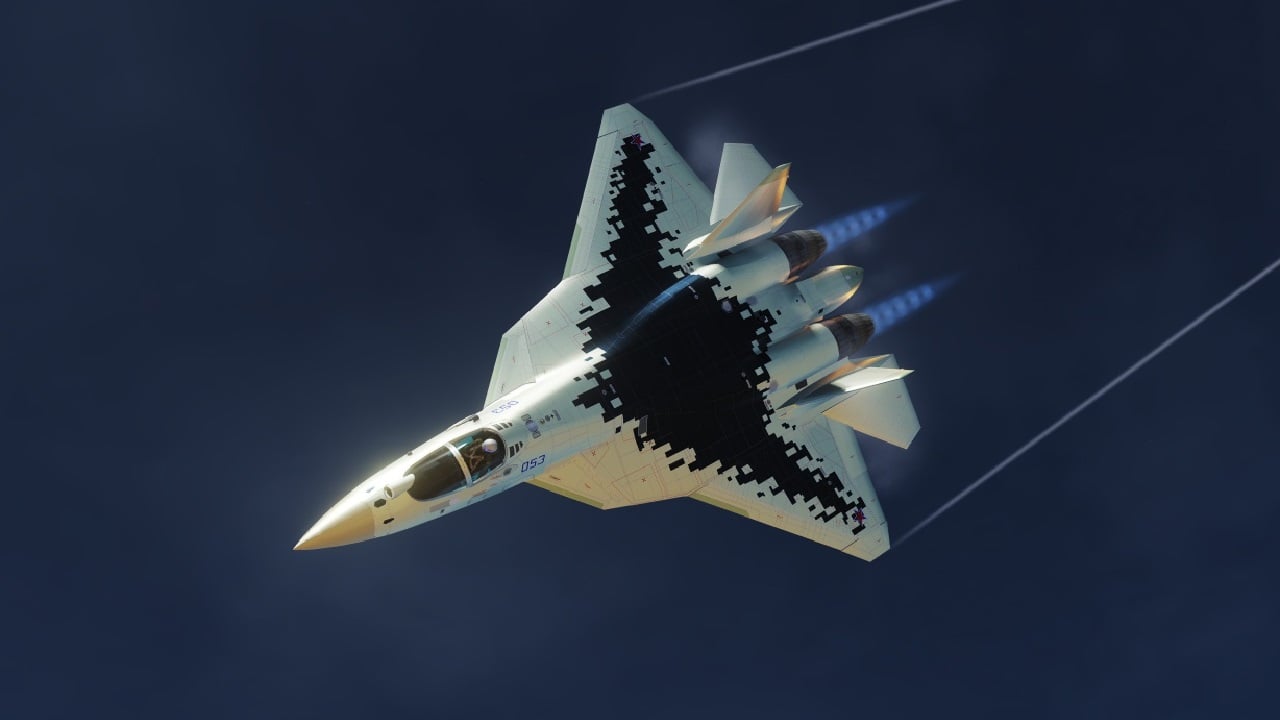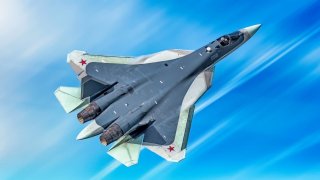Russia's Su-57 Felon Fighter Could Make the Ultimate Comeback
The Su-57, Russia's fifth-generation stealth fighter, has been notably absent in the Ukraine conflict. This is likely due to its high costs, complexity, and limited numbers, making it too valuable to risk in combat. But once the war is over, the Su-57 felon could make a surprising comeback.
Summary and Key Points: The Su-57, Russia's fifth-generation stealth fighter, has been notably absent in the Ukraine conflict.

-This is likely due to its high costs, complexity, and limited numbers, making it too valuable to risk in combat.
-Instead, Russia has relied on older, more expendable systems. Despite calls for its cancellation, the Su-57 remains Russia's most advanced fighter and could be mass-produced post-war, enhancing its strategic capabilities.
Why Russia's Su-57 Stealth Fighter is Absent from Ukraine's Skies
A recent report by this author in these pages entitled “Russia’s Su-57: A Stealth Fighter Too Valuable for Combat?” has caused quite a stir in some circles. The Russians have made significant investment in their fifth-generation warplane designed by the legendary Sukhoi Design Bureau – the Su-57.
With a war raging in Ukraine that Moscow’s leadership has dubbed as an “existential” fight, the world expected to see some of Russia’s much-ballyhooed capabilities brought to bear in the early days against Ukraine.
Interestingly, the only thing newsworthy about the Su-57’s service in the two-year-long Ukraine War has been how absent the fifth-generation warbird has been from the contested skies above Ukraine.
In the original piece I wrote for The National Interest, I speculated that, like the next-generation T-14 Armata Russian main battle tank, the Su-57 was deemed to be too valuable to lose in combat by Moscow. That’s because, like the Armata, the Su-57 is a very complex machine that is costly to build and maintain.
Due to its high costs and the extended time it takes to build, the Russian military has a finite supply of the Su-57. Moscow rightly understands that losing a significant number of these systems in combat with Ukraine would create a propaganda victory for their enemies and cause many headaches in trying to replace these birds.
Russia Doesn’t Need to Deploy the Su-57 in Large Numbers to Ukraine
Besides, as Moscow understands it, the Russian military is winning the war of attrition against the Ukrainians without their more advanced equipment. On the ground, the vehicle that has defined Russia’s side of the war has been the Soviet era T-72.
In the air, it has been the older warplanes in Russia’s arsenal. There are so few Su-57s available to Russia, and the Russian defense industrial base is so focused on mass-producing cheaper, expendable systems, that it makes no sense for Russia to risk their vaunted Su-57s.
Already, the Ukrainians have scored a major propaganda victory with unconfirmed claims that they struck an Su-57 while it was on the runway at a Russian airbase. Of course, hitting a bird while it’s on the ground does little to prove the warplane is ineffective in combat. It just means the Ukrainians got in a lucky shot at the right time. That’s war. But let’s not feed the propaganda machine by trying to make something more out of that incident.
With Russia’s defense industrial base geared toward mass producing cheaper, older, and more expendable platforms, some have wondered whether the Su-57 should just be canceled.
As an American, I would support anything that makes U.S. rivals weaker. And canceling the Su-57 would certainly weaken Russia’s overall strategic capabilities against the U.S. and its allies.
If I were being objective, though, I would advise Moscow against cutting their fifth-generation warplane that has been advertised (but certainly is not) as Russia’s answer to the F-22 Raptor.
Although the Su-57 is no match for the F-22, it is probably the most advanced warplane in Russia’s arsenal. Here’s the thing about this war for Russia: It has forced them to revitalize their defense industrial base and to expand their production of indigenous commodities.
Russia Will Have the Time & Capacity It Needs to Build Su-57s in Abundance
Once the war ends, and it will end soon with a Russian victory sadly, Moscow’s war machine will continue operating at peak efficiency, whereas the Western defense industrial base keeps sputtering along.

With the Ukraine War over, at that point, Russia will have the ability to mass-produce its Su-57. It could be one truly epic stealth fighter comeback.
Don’t buy the propaganda from the idiotic NAFO-types on Twitter/X. Just because Russia is holding their fifth-generation warplanes back from the main fighting doesn’t mean they’re losing the war. What Moscow is doing with the Su-57 is no different than what the Americans are doing with their vaunted aircraft carriers against the ongoing Houthi threat: trying to keep them removed from the Houthis’ anti-ship ballistic missiles. As with the Su-57, the Americans understand the propaganda victory its enemies would enjoy if its advanced systems were damaged or destroyed.
Russia would be foolish to cancel its Su-57. It remains Russia’s most dynamic fighter and, once they can mass produce enough of these systems, whenever the next Russian war begins, it could be a decisive frontline fighter. But Moscow will only risk these systems if it knows it can reliably replace them.

Author Experience and Expertise: Brandon J. Weichert
Brandon J. Weichert, a National Interest national security analyst, is a former Congressional staffer and geopolitical analyst who is a contributor at The Washington Times, the Asia Times, and The-Pipeline. He is the author of Winning Space: How America Remains a Superpower, Biohacked: China’s Race to Control Life, and The Shadow War: Iran’s Quest for Supremacy. His next book, A Disaster of Our Own Making: How the West Lost Ukraine, is due October 22 from Encounter Books. Weichert can be followed via Twitter @WeTheBrandon.
All images are Creative Commons or Shutterstock.
From the Vault
Russia Freaked Out: Why the U.S. Navy 'Unretired' the Iowa-Class Battleships
Battleship vs. Battlecruiser: Iowa-Class vs. Russia's Kirov-Class (Who Wins?)


